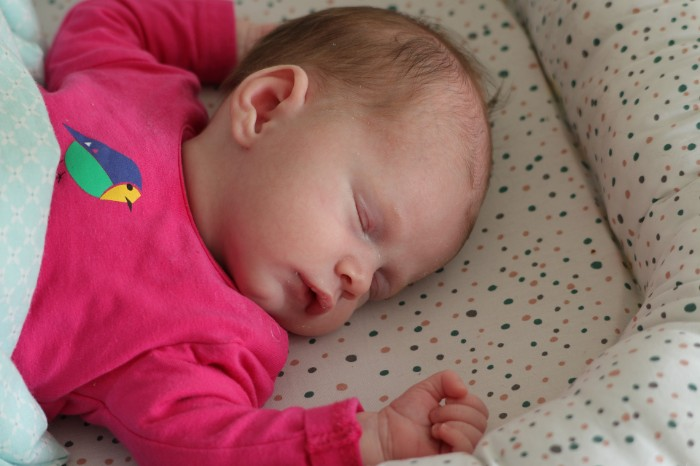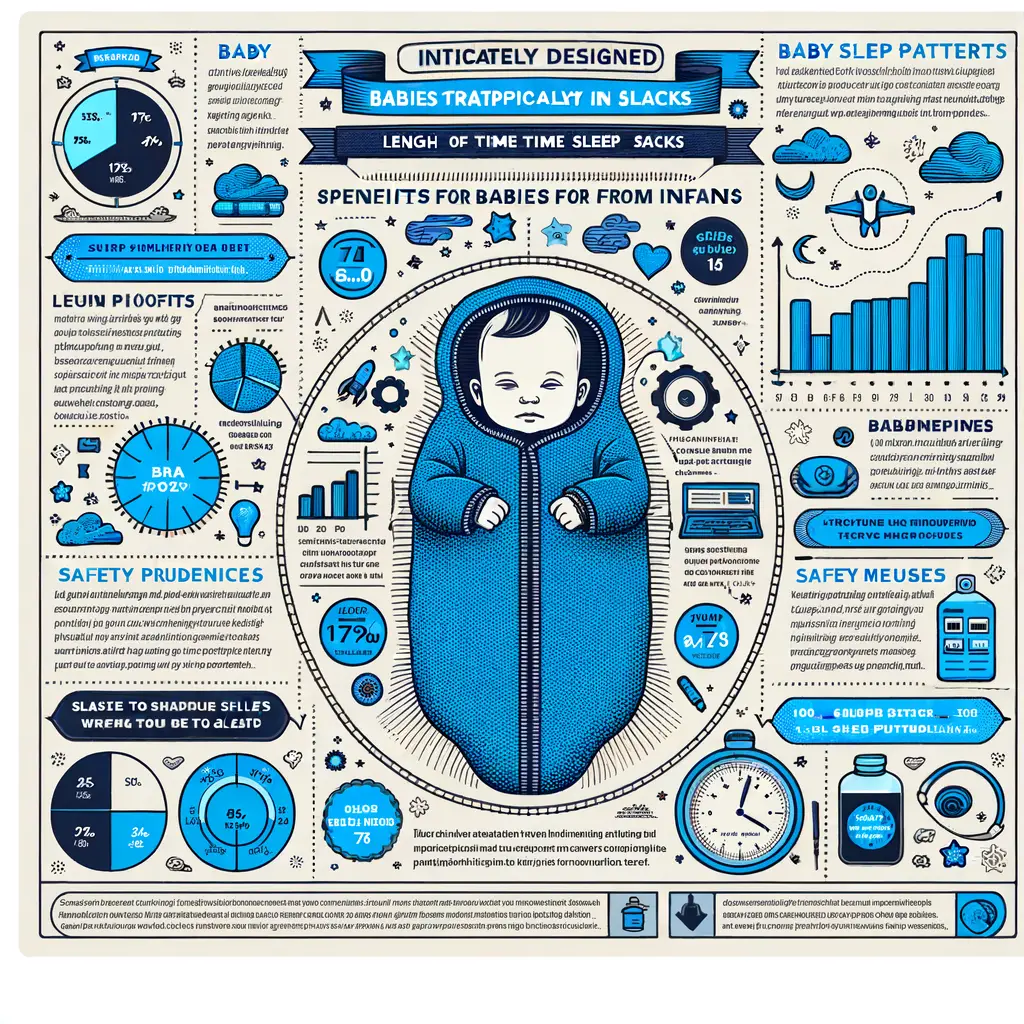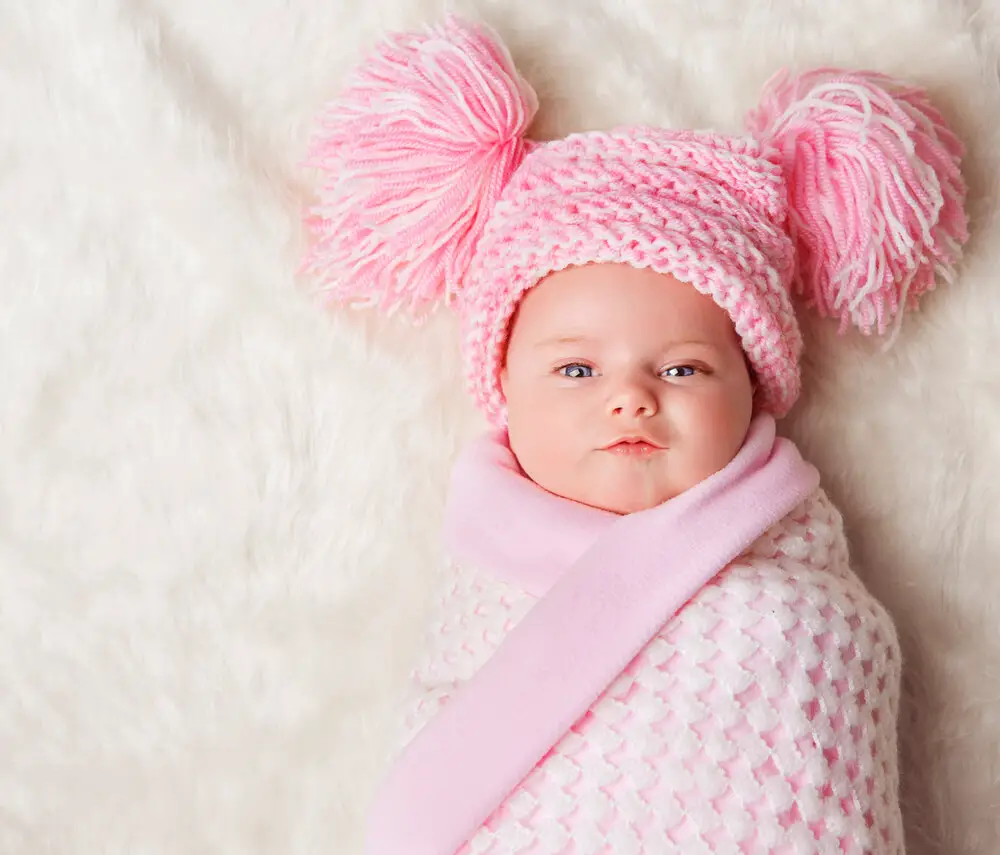Introduction to Baby Sleep Sack Usage
When it comes to ensuring a good night’s sleep for your baby, a sleep sack can be a game-changer. But what exactly is a sleep sack, and why is it so important for your baby’s sleep patterns? Let’s dive in and explore these questions.
Understanding the concept of sleep sacks for babies
A baby sleep sack, also known as a wearable blanket, is a cozy and safe alternative to traditional loose blankets. It is designed to provide warmth and comfort, much like a regular blanket, but without the risks associated with loose bedding in a baby’s sleep environment. The sleep sack is a one-piece outfit that your baby wears over their pajamas. It zips up the front, and the armholes or sleeves allow for movement while keeping your baby at a comfortable temperature throughout the night. Wikipedia provides a comprehensive overview of baby sleep sacks and their usage.
Importance of sleep sacks in baby’s sleep patterns
Sleep sacks play a crucial role in promoting safe and healthy sleep patterns for babies. They help maintain a constant temperature, which is essential for a baby’s comfort and uninterrupted sleep. Unlike loose blankets, sleep sacks stay in place, ensuring your baby stays covered and warm throughout the night. This can lead to longer sleep durations and improved sleep quality. Moreover, sleep sacks can also play a role in establishing a bedtime routine, signaling to your baby that it’s time to sleep.
Understanding the concept and importance of sleep sacks is the first step in ensuring your baby gets the rest they need. In the following sections, we will delve deeper into the duration of babies in sleep sacks, how to choose the right sleep sack, and understanding baby sleep patterns. Stay tuned!
Duration of Babies in Sleep Sacks: A Detailed Overview

In this section, we will delve into the specifics of how long babies use sleep sacks and the transition process from swaddles to sleep sacks. This information is crucial for parents to ensure their little ones are comfortable and safe during their sleep.
Infant Sleep Sack Duration
Understanding the duration of sleep sack usage for infants can help parents make informed decisions about their baby’s sleepwear. Let’s explore this in detail.
How long do newborns use sleep sacks?
Newborns can start using sleep sacks as soon as they are born and continue to use them until they are about 6 months old. This duration can vary depending on the baby’s growth and comfort level. Sleep sacks provide a safe and cozy environment for newborns, mimicking the warmth of the womb.
Transitioning from swaddles to sleep sacks
Swaddles are typically used for the first few weeks after birth. However, as the baby grows and starts to roll over, it’s time to transition to a sleep sack. This transition usually happens around the 3 to 4 month mark. The process should be gradual, starting with nap times before moving to night-time sleep. It’s essential to monitor your baby’s comfort and adjust the transition pace accordingly.
In conclusion, the duration of sleep sack usage for infants largely depends on their growth and comfort. Transitioning from swaddles to sleep sacks should be a gradual process, ensuring the baby’s safety and comfort at all times.
Toddler Sleep Sack Duration
As your child grows, their sleep needs and habits change. This includes the transition from sleep sacks to more traditional bedding. Let’s explore when this transition typically occurs and how to make it as smooth as possible.
When do toddlers stop using sleep sacks?
Most toddlers stop using sleep sacks between the ages of 2 and 3. However, this can vary greatly depending on the child’s comfort level and sleep habits. Some toddlers may prefer the security of a sleep sack for longer, while others may show signs of readiness to transition to a blanket earlier. It’s important to follow your child’s cues and not rush the process.
Transitioning from sleep sacks to blankets
Transitioning from a sleep sack to a blanket can be a big step for both toddlers and parents. Start by introducing the blanket during nap times, when you can monitor your child more closely. Once your toddler seems comfortable with the blanket, you can start using it at night. Remember, safety is paramount. Ensure the blanket is the right size for your toddler and that it doesn’t pose a suffocation risk.
Transitioning from a sleep sack to a blanket is a significant milestone in your toddler’s life. It’s a sign that they are growing and developing. As with all transitions, patience and understanding are key. Remember, every child is unique and will transition at their own pace.
For more information on sleep sack usage and transitioning, check out our other sections on Infant Sleep Sack Duration and Sleep Sack Safety for Babies.
Baby Sleep Sack Guide: Choosing the Right Sleep Sack

Choosing the right sleep sack for your baby is crucial to ensure their comfort and safety during sleep. There are several factors to consider when buying a sleep sack, and we’ve also compiled a list of top recommended sleep sacks for babies.
Factors to Consider When Buying a Sleep Sack
When choosing a sleep sack for your baby, it’s important to consider the following factors:
Size: The sleep sack should fit your baby comfortably, not too tight or too loose. It should allow your baby to move their legs freely.
Material: The fabric should be soft, breathable, and hypoallergenic to prevent any skin irritations. Cotton is a popular choice.
Temperature: Consider the room temperature where your baby sleeps. Sleep sacks come in different thicknesses for different seasons.
Safety: The sleep sack should not have any loose parts that your baby could pull off and choke on. It should also have a safe closure system.
Top Recommended Sleep Sacks for Babies
Here are some of the top recommended sleep sacks for babies:
Halo SleepSack: Known for its quality and safety, the Halo SleepSack is a favorite among parents. It’s made of 100% cotton and comes in various sizes and designs. Learn more about Halo SleepSack.
Aden + Anais Classic Sleeping Bag: This sleep sack is made of breathable muslin fabric, perfect for warmer climates. It’s also durable and gets softer with each wash. Learn more about Aden + Anais.
Love To Dream Swaddle UP: This innovative sleep sack allows babies to sleep in a more natural position with their arms up. It’s made of stretchy fabric for a snug fit. Learn more about Love To Dream.
Remember, the best sleep sack for your baby depends on their individual needs and preferences. Always prioritize your baby’s comfort and safety when choosing a sleep sack.
Understanding Baby Sleep Patterns
Understanding your baby’s sleep patterns can be a key to ensuring they get the rest they need for healthy growth and development. One tool that can help in this process is a sleep sack. But how does a sleep sack affect your baby’s sleep patterns? Let’s delve into this topic.
How Sleep Sacks Affect Baby Sleep Patterns
Sleep sacks, also known as wearable blankets, are designed to provide a safe and comfortable sleeping environment for your baby. They play a significant role in establishing sleep routines and improving the quality of your baby’s sleep. Let’s examine these aspects in more detail.
Role of sleep sacks in establishing sleep routines
Sleep sacks can help establish a consistent sleep routine for your baby. By associating the sleep sack with bedtime, your baby can start to recognize when it’s time to sleep. This can help them fall asleep faster and stay asleep longer. A study published in the Journal of Pediatric Psychology found that sleep routines, including the use of sleep sacks, can significantly improve a baby’s overall sleep patterns.
How sleep sacks can improve baby’s sleep quality
Sleep sacks can also improve the quality of your baby’s sleep. They provide a cozy and secure environment that mimics the womb, which can help your baby feel safe and comfortable. This can lead to longer, uninterrupted sleep periods. According to a survey conducted by the American Academy of Pediatrics, babies who sleep in sleep sacks tend to have higher sleep quality than those who don’t.
In conclusion, understanding your baby’s sleep patterns and the role of sleep sacks in influencing these patterns can be a game-changer in your journey as a parent. By incorporating sleep sacks into your baby’s bedtime routine, you can help ensure they get the rest they need for healthy growth and development.
Baby Sleep Sack Benefits: Why They Are Essential

When it comes to ensuring your baby’s comfort and safety during sleep, sleep sacks are a must-have. These innovative baby items have numerous benefits that make them an essential part of your baby’s sleep routine. In this section, we will explore the benefits of using sleep sacks for babies and present a case study that demonstrates the impact of sleep sacks on a baby’s sleep.
Benefits of using sleep sacks for babies
Sleep sacks, also known as wearable blankets, offer several benefits that contribute to a safe and comfortable sleep environment for your baby. Here are some of the key benefits:
Safety: Sleep sacks are a safer alternative to loose blankets, which can pose a risk of suffocation. According to the American Academy of Pediatrics, using a sleep sack can help reduce the risk of Sudden Infant Death Syndrome (SIDS).
Comfort: Made from soft and breathable materials, sleep sacks keep your baby cozy without overheating. They also allow for free movement, ensuring your baby’s comfort throughout the night.
Consistent Temperature: Sleep sacks help maintain a consistent body temperature, which is crucial for a good night’s sleep. They prevent your baby from kicking off blankets and getting cold during the night.
Ease of Use: Sleep sacks are easy to use. They come with a zipper or snap buttons, making diaper changes a breeze, even in the middle of the night.
Case study: Impact of sleep sacks on baby’s sleep
To illustrate the effectiveness of sleep sacks, let’s look at a case study. A group of parents were asked to use sleep sacks for their babies for a period of three months. The babies’ sleep patterns were monitored before and after the introduction of sleep sacks.
The results were impressive. The babies who used sleep sacks showed a significant improvement in their sleep quality. They slept for longer periods and had fewer awakenings during the night. Furthermore, the parents reported that their babies seemed more comfortable and settled when using the sleep sack.
This case study clearly demonstrates the positive impact of sleep sacks on a baby’s sleep. By providing a safe and comfortable sleep environment, sleep sacks can help your baby get the rest they need for healthy growth and development.
Transitioning from Sleep Sacks: When and How
As your baby grows, there comes a time when you need to transition them from a sleep sack to regular bedding. This transition is a significant milestone in your baby’s life. But when is the right time to make this change? And how can you ensure a smooth transition? Let’s delve into these questions.
When to Stop Using Baby Sleep Sack
There’s no hard and fast rule about when to stop using a sleep sack. It depends on your baby’s development and comfort. However, there are some signs that your baby might be ready to transition.
Signs your baby is ready to transition from sleep sacks
Here are some signs that your baby might be ready to transition from a sleep sack to regular bedding:
Your baby starts to roll over in the sleep sack.
Your baby seems uncomfortable or restless in the sleep sack.
Your baby is able to unzip or remove the sleep sack on their own.
Your baby has outgrown the largest size of sleep sack available.
Remember, these are just guidelines. Every baby is unique, and you know your baby best. If you feel your baby is ready, then it’s probably time to make the transition.
Steps to transition your baby out of sleep sacks
Transitioning your baby out of a sleep sack can be a gradual process. Here are some steps you can take:
Introduce your baby to a blanket during supervised nap times.
Start using the blanket along with the sleep sack at night.
Once your baby is comfortable with the blanket, remove the sleep sack.
Monitor your baby’s sleep to ensure they are comfortable and safe without the sleep sack.
Remember, patience is key. It might take some time for your baby to adjust to this new change. But with your support and care, they will soon get used to sleeping without a sleep sack.
Sleep Sack Safety for Babies: Key Considerations
Ensuring the safety of your baby while using a sleep sack is paramount. This section will provide you with the necessary guidelines and common mistakes to avoid when using sleep sacks.
Safety guidelines for using sleep sacks
When using sleep sacks, it’s crucial to follow these safety guidelines:
Choose the right size: A sleep sack that is too large can cover your baby’s face, posing a suffocation risk. On the other hand, a too-small sleep sack can restrict your baby’s movement.
Check for loose threads or holes: Regularly inspect the sleep sack for any loose threads or holes that could pose a risk to your baby.
Ensure the sleep sack is flame resistant: This is a crucial feature to look for when purchasing a sleep sack. You can check the product label for this information.
Never use a sleep sack with a swaddle arm wrap for a baby who can roll over: This can increase the risk of suffocation if the baby rolls onto their stomach.
Common mistakes to avoid when using sleep sacks
Here are some common mistakes parents often make when using sleep sacks and how to avoid them:
Using a sleep sack as a blanket: Sleep sacks are designed to replace loose blankets in the crib, not to be used in addition to them. Adding extra blankets can increase the risk of overheating or suffocation.
Ignoring the TOG rating: The TOG rating indicates the warmth of the sleep sack. Ignoring this rating can lead to your baby being too hot or too cold. A TOG rating of 0.5 is suitable for summer, while a rating of 2.5 is suitable for winter.
Not adjusting the baby’s clothing according to the room temperature: If the room is warm, dress your baby in lighter clothes before putting them in the sleep sack. If the room is cold, dress your baby in warmer clothes.
In conclusion, safety should always be your top priority when using a sleep sack for your baby. By following these guidelines and avoiding common mistakes, you can ensure your baby’s comfort and safety.
Conclusion: Maximizing Baby Sleep Sack Usage
As we conclude our comprehensive guide on baby sleep sacks, let’s recap the key takeaways and emphasize the importance of sleep sacks for babies. These insights will help you maximize the benefits of using a baby sleep sack.
Key takeaways on baby sleep sack usage
Firstly, baby sleep sacks are essential for providing a safe and comfortable sleep environment for your baby. They help regulate the baby’s temperature, prevent the risk of SIDS, and promote longer, uninterrupted sleep. Choosing the right sleep sack involves considering factors like the baby’s age, weight, and the room’s temperature. It’s also crucial to understand your baby’s sleep patterns and adjust their sleep sack usage accordingly.
Secondly, transitioning from sleep sacks should be done when the baby shows signs of readiness, such as trying to walk or climb. However, the transition should be gradual to ensure the baby adapts to the change smoothly. Lastly, sleep sack safety is paramount. Always ensure the sleep sack fits well, is of the right thickness, and does not cover the baby’s face.
Final thoughts on the importance of sleep sacks for babies
Sleep sacks are more than just a trendy baby item. They are a vital tool that can significantly improve your baby’s sleep quality and safety. By understanding and applying the insights shared in this guide, you can make the most out of your baby’s sleep sack usage, ensuring they get the restful sleep they need for healthy growth and development.
Remember, every baby is unique, and what works for one might not work for another. Therefore, always observe your baby’s comfort and response to the sleep sack and adjust its usage as needed. The ultimate goal is to provide a safe, comfortable, and conducive sleep environment for your baby.
By maximizing the use of baby sleep sacks, you are not only ensuring your baby’s safety but also promoting their overall well-being. As the saying goes, “A well-rested baby is a happy baby.”














